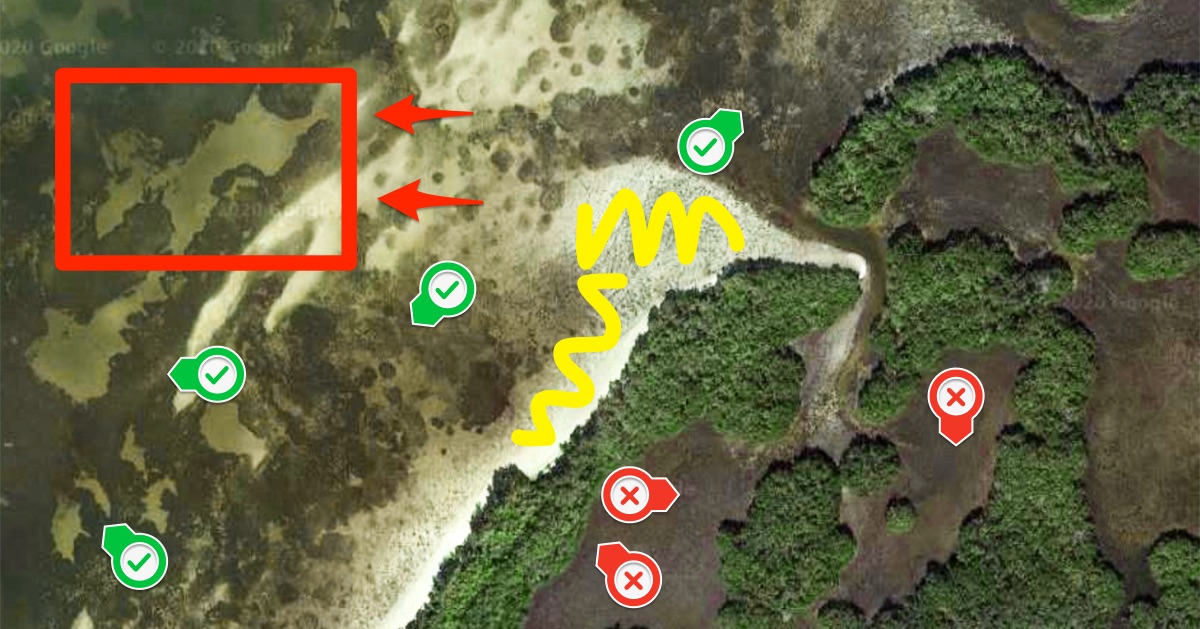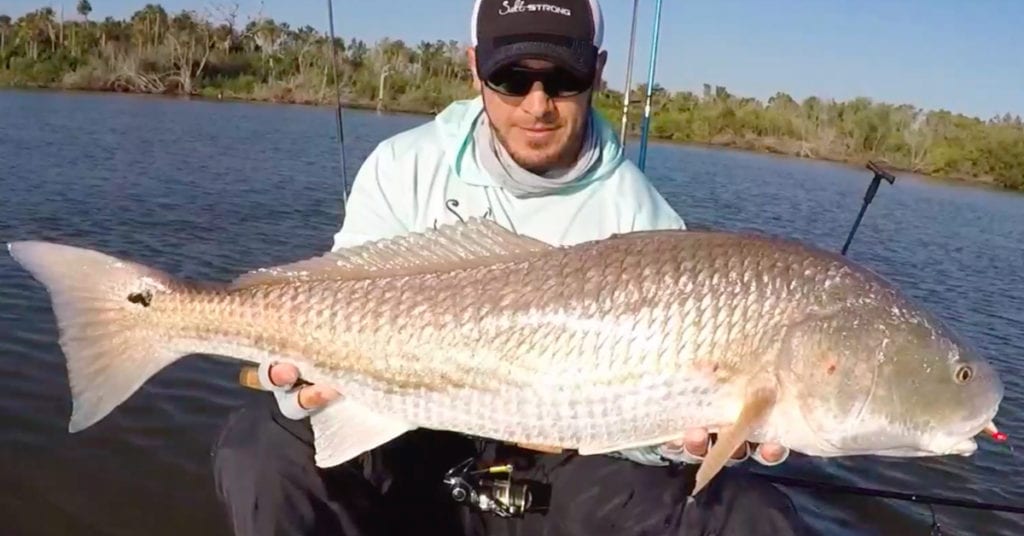How To Easily Identify Seagrass On Satellite Maps (4 Things To Look For)
- By: Tony Acevedo
- on
- Found In: Fishing Tips, Inshore Fishing, WEEKLY NEWSLETTER: 8-23-20

- Comments (0)
Want to catch more redfish, trout, snook, and flounder?
Then look for seagrass!
Seagrass provides an ideal habitat for baitfish and crustaceans, which means that it’s is an ideal hunting ground for predator fish.
Of course, the quickest way to find seagrass is to check out satellite maps, but it can be confusing to know exactly what you’re looking at.
The different types of bottom aren’t always really clear and sometimes it’s hard to tell the difference between seagrass, mud, sand, and deeper water.
So in this video, I’ll show you exactly how to distinguish seagrass from other types of bottom, so you can find more fishing spots and catch more fish.
Check it out below.
How To Find Seagrass Using Satellite Maps [VIDEO]

When you first look at satellite maps, it can be difficult to tell seagrass apart from other structure.
Here are four things to look for to know you’ve found seagrass:
- Color change on the bottom (dark green seagrass is often next to and mixed in with brown or tan sand, so look for those two colors next to each other)
- Jagged, irregular edges of color changes
- Mottled color patterns
- Prop scars
And here are two types of structure that look like seagrass, but obviously aren’t:
- Deeper cuts or holes
- Muddy bottom
Deeper cuts or holes are usually a solid color (as opposed to the mottled pattern of seagrass) that may get darker in the center as the water gets deeper.
Cuts are often near the edges of islands.
Muddy bottom is darker than seagrass and is also a more solid, consistent color.
Areas with muddy bottom are usually found where there is little current flow.
And finally, one last thing to consider when looking for seagrass is the time of year.
In the winter, there is much less seagrass than in the summer, so it’ll probably be harder to find grass on the water.
Conclusion

When looking for seagrass on satellite maps, look for areas of mottled, dark green bottom, often near brown or tan sand.
Have any questions about finding seagrass on satellite maps?
Let us know in the comments below!
And if you want more videos like this where we break down fishing spots and strategies on online maps, then you’ll love our Insider Club’s weekly spot dissections.
Every Monday I get on online maps and dissect a spot from Texas to Florida to Virginia showing where the best places to fish are.
As an Insider, you’ll also get access to our Insider reports where do spot dissections and then go out and fish them and show you what worked and what didn’t.
Plus, you’ll also get discounts to our online tackle store.
Click here to learn more about the Insider Club.
Related articles:
Related categories:
STOP WASTING TIME ON THE WATER!
Do what the “SMART ANGLERS” are doing and join the Insider Club.
Here’s what you’ll receive today when you join:
- Weekly fishing reports and TRENDS revealing exactly where you should fish every trip
- Weekly “spot dissection” videos that walk you through all the best spots in your area
- Exclusive fishing tips from the PROS you can’t find anywhere else
- Everything you need to start catching fish more consistently (regardless if you fish out of a boat, kayak, or land).









